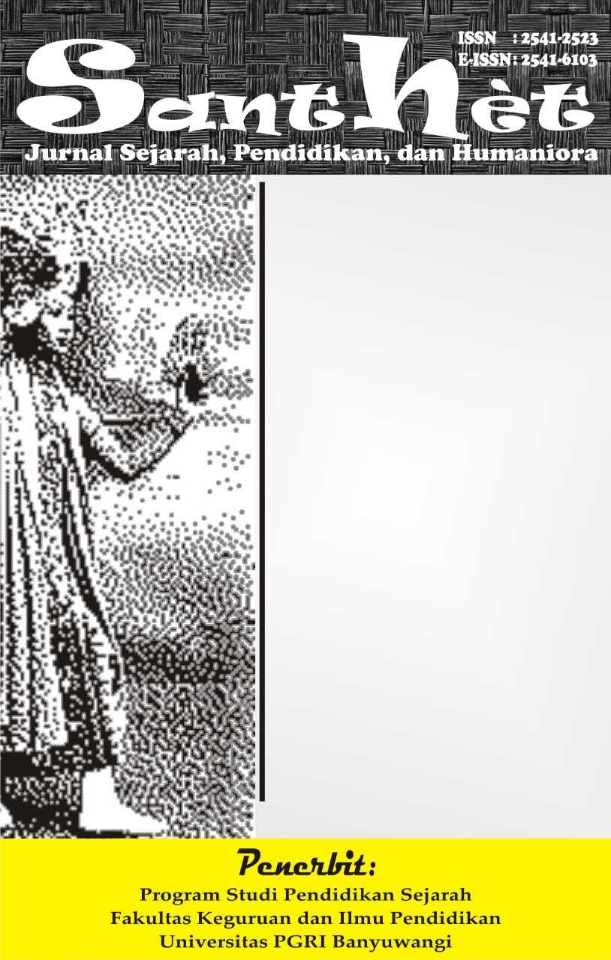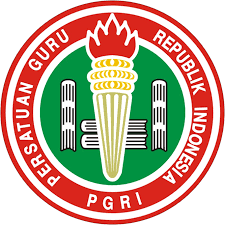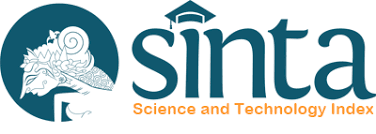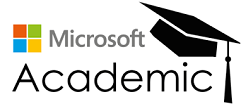Virtual Field Trip to the Youth Pledge Museum in History Learning at SMA Negeri 7 Banjarmasin
Karyawisata Virtual Museum Sumpah Pemuda dalam Pembelajaran Sejarah di SMA Negeri 7 Banjarmasin
DOI:
https://doi.org/10.36526/santhet.v8i1.3671Keywords:
Virtual field trip, Historical learning, Museum Sumpah PemudaAbstract
The Ministry of Education and Culture, through the Museum Sumpah Pemuda's implementing unit, has introduced virtual visitation services. Virtual visits, or virtual field trips, in history education serve as an alternative to real field trips. This research aims to describe the implementation of history education using virtual field trips to the Museum Sumpah Pemuda in SMA Negeri 7 Banjarmasin, specifically focusing on the topic of Sumpah Pemuda, conducted in the year 2021. The research utilized a descriptive qualitative research method, involving observation, interviews, and document analysis. The virtual field trip was designed as part of the history education curriculum, encompassing planning, implementation, and evaluation phases. The implementation of the learning process consisted of an opening phase, core activities, and a closing phase. The utilization of virtual field trips in history education at SMA Negeri 7 Banjarmasin is expected to be an efficient alternative that enhances students' learning experiences.
References
Agung, L., & Wahyuni, S. (2013). Perencanaan Pembelajaran Sejarah. Ombak.
Aman. (2011). Model Evaluasi Pembelajaran Sejarah. Ombak.
Handoko, G. S., Djono, D., & Yunianto, T. (2018). Pemanfaatan Museum Pura Mangkunegaran Sebagai Media Pembelajaran IPS. Candi, 17(1), 129.
Heindel, R., & Holdener, E. (2021). Bringing Knox County into the Classroom: Virtual Field Trips for Kenyon’s Earth Sciences Offerings.
Husen, W. R. (2017). PENGEMBANGAN APRESIASI SENI RUPA SISWA SEKOLAH DASAR MELALUI PENDEKATAN KRITIK SENI PEDAGOGIK. NATURALISTIC : Jurnal Kajian Penelitian Pendidikan Dan Pembelajaran, 2(1), 53–61. https://doi.org/10.35568/naturalistic.v2i1.100
Jacobson, A. R., Militello, R., & Baveye, P. C. (2009). Development of computer-assisted virtual field trips to support multidisciplinary learning. Computers & Education, 52(3), 571–580. https://doi.org/10.1016/j.compedu.2008.11.007
Pane, A., & Dasopang, M. D. (2017). Belajar dan Pembelajaran. Fitrah: Jurnal Kajian Ilmu-Ilmu Keislaman, 3(2), 333–352.
Salam, R. (2017). Efektifitas Penanaman Nilai-Nilai Kebangsaan Melalui Metode Karyawisata Dalam Pembelajaran Sejarah. Jurnal Profesi Keguruan, 3(1), 105–111.
Sayono, J. (2013). Pembelajaran Sejarah di Sekolah: Dari Pragmatis Ke Idealis. Jurnal Sejarah Dan Budaya, 7(1), 9–17. http://journal.unnes.ac.id/sju/index.php/ijhe%250APENGARUH
Sinaga, O. (2021). Pemanfaatan Museum Negeri Sumatera Utara Sebagai Sumber Belajar Sejarah Tingkat SMA. Education & Learning, 1(1), 35–38. https://doi.org/10.57251/el.v1i1.21
Stoddard, J. (2009). Toward a virtual field trip model for the social studies. Contemporary Issues in Technology and Teacher Education, 9(4), 412–438.
Sukandarrumidi. (2012). Metodologi Penelitian: Petunjuk Praktis untuk Peneliti Pemula. Gadjah Mada University Press.
Zafri. (2017). Pembenahan Pembelajaran Sejarah Untuk Membangun Generasi Yang Terdidik. UPI. https://sejarah.upi.edu/artikel/dosen/pembenahan-pembelajaran-sejarah-untuk-membangun-generasi-yang-terdidik/





























